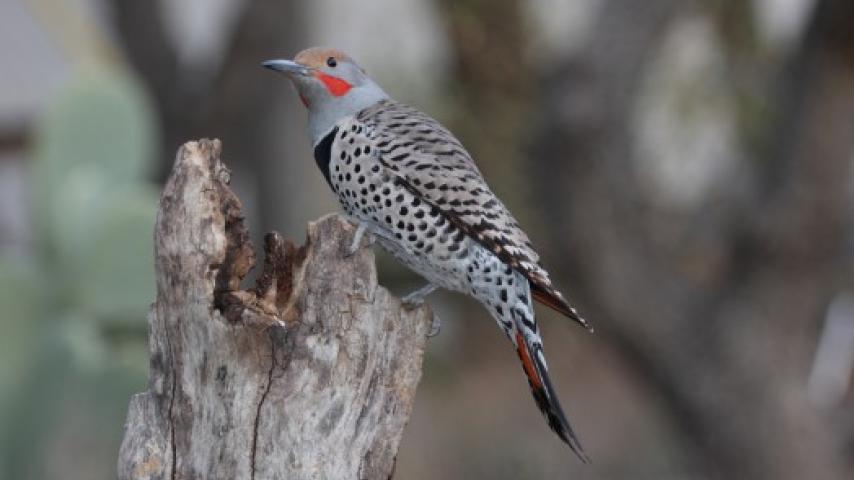Northern Flicker (Colaptes auratus)
Flickers are familiar birds, but many people don’t realize they are a woodpecker, as they see them hopping around on the ground rather than inching up a tree trunk like a typical member of their family.

KINGDOM Animalia - PHYLUM Chordata - CLASS Aves - ORDER Piciformes - FAMILY Picidae
They are on the ground because their primary food is ants, and they capture many of them on the ground. The need to be camouflaged during their long periods on the ground is probably why flickers are brown rather than the black and white of most other woodpeckers.
Flickers are nevertheless woodpeckers in all ways, with a long, pointed bill for excavating wood; a long tongue with barbed tip for extracting insect prey from holes; four sharp-clawed toes that extend in all four directions and hold the bird firmly onto a tree trunk yet allow movement in any direction; and stiff, pointed tail feathers for propping against that trunk.
Flickers use their bill to excavate a nesting hole, usually well up in a dead tree. They lay their six to eight white eggs in the spring and incubate them for about 12 days. The nestlings hatch blind and helpless, but they grow rapidly as each adult returns from a foraging trips about once every hour to feed them with insects of all kinds but especially ant larvae and pupae. In a little less than a month, the young fledge and never return to the nest.
The sexes of flickers are easily distinguished by the male’s red malar stripes (“whiskers”). Our breeding flickers with vivid reddish coloration under their wings and tail are resident in the Puget Sound area, but in winter small numbers of flickers move down from Alaska, and they have yellow under their wings and tail. Seeing one of these individuals reminds you of the annual migration that is so characteristic of birds.
Flickers are generally well loved, but in spring that love can turn to hate when male flickers begin to signal their territories by persistent and loud drumming on any suitably resonant substrate, including parts of houses. Such sounds coming from right outside a window can be irritating even to the most dedicated bird lover. Worse, some sections of wooden houses are irresistible to flickers as potential nest sites.

